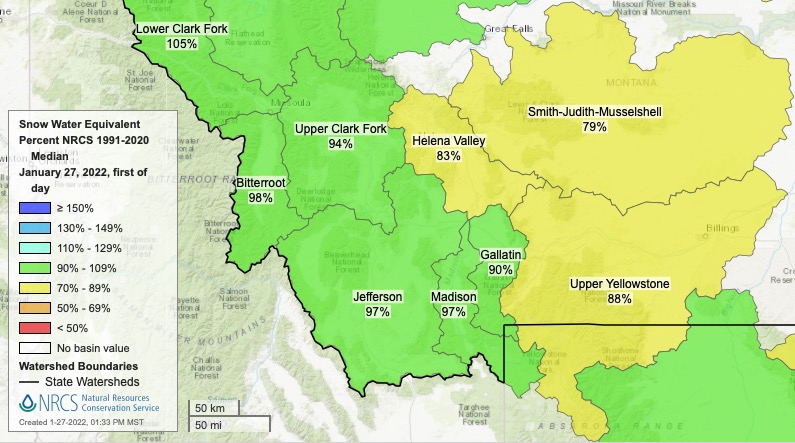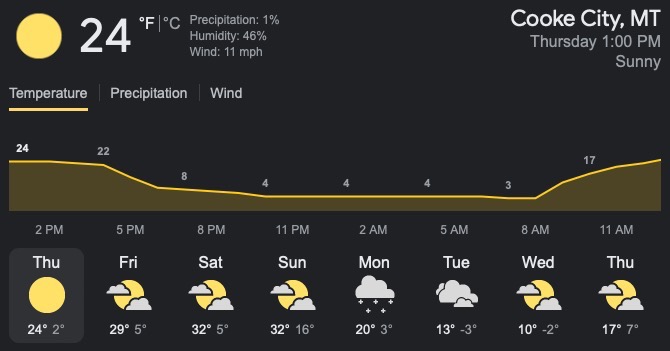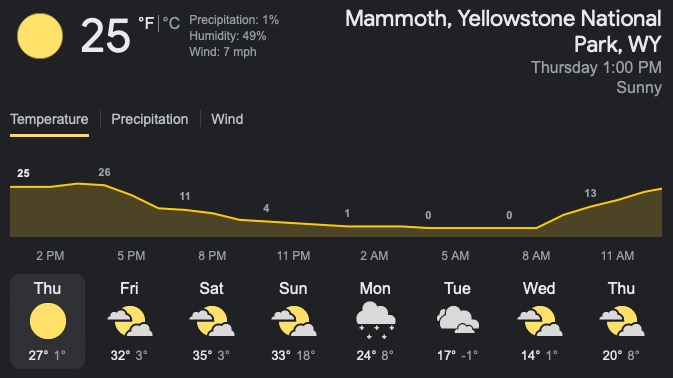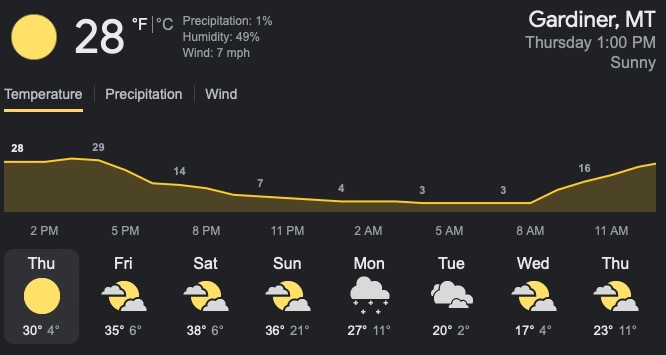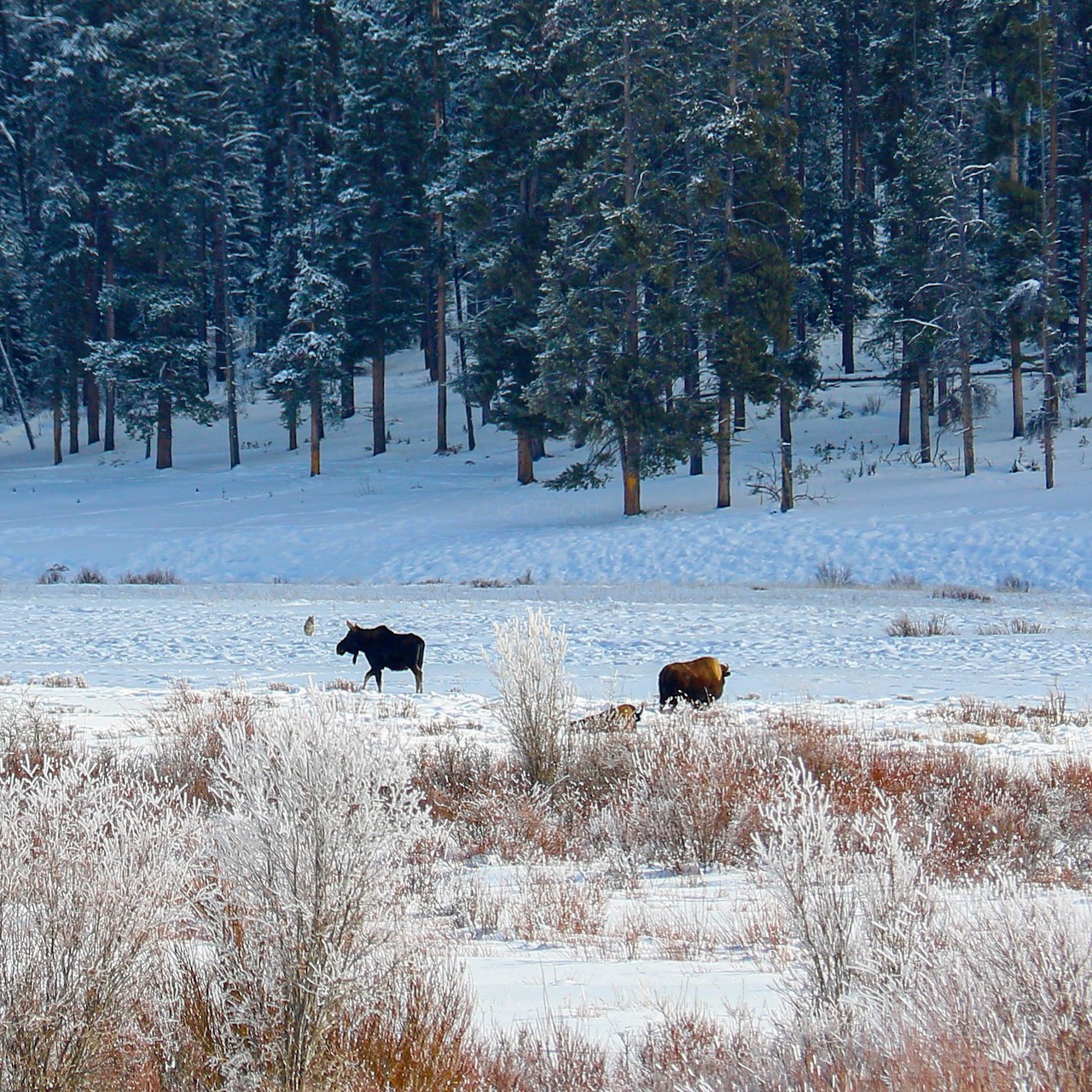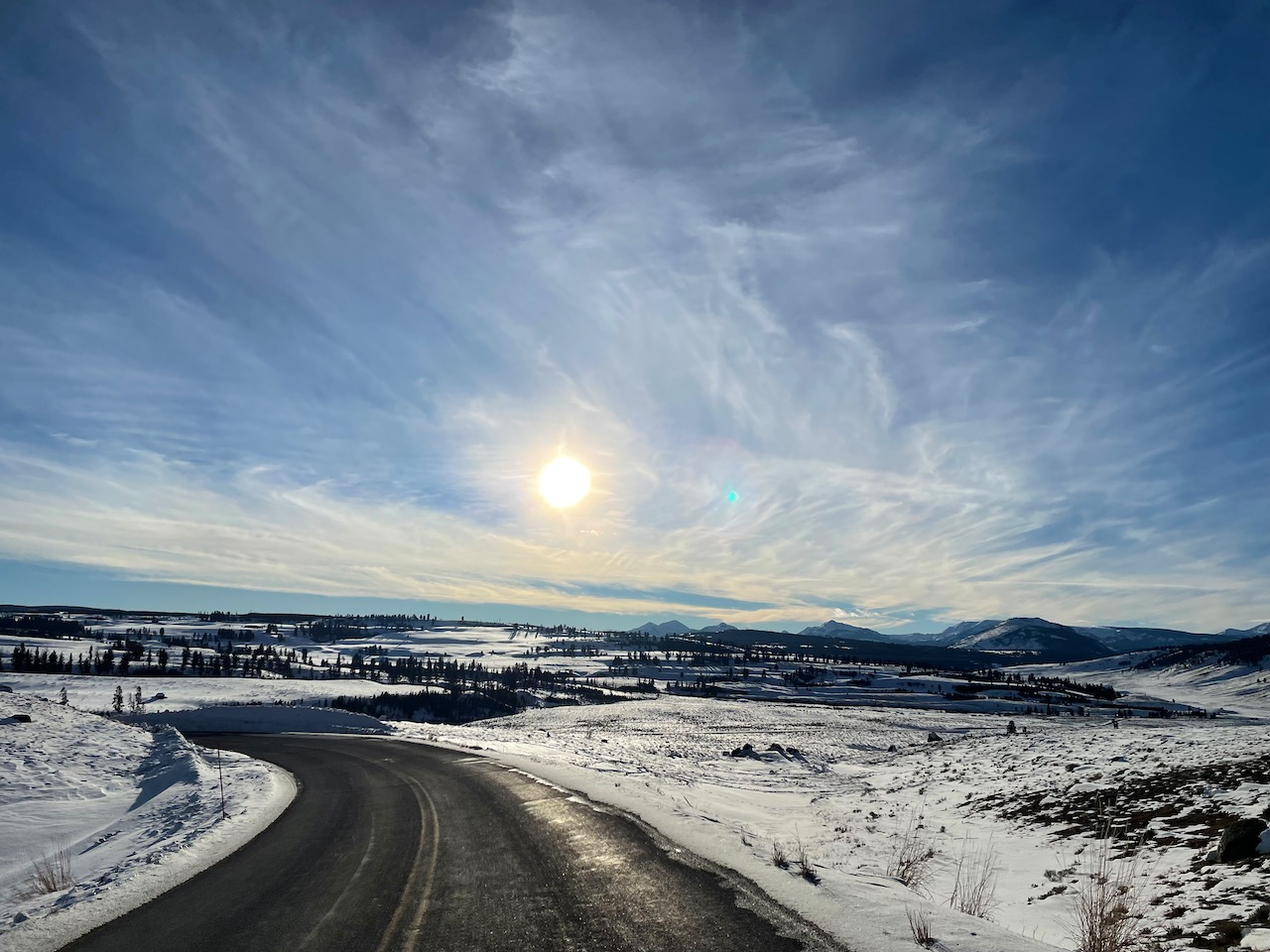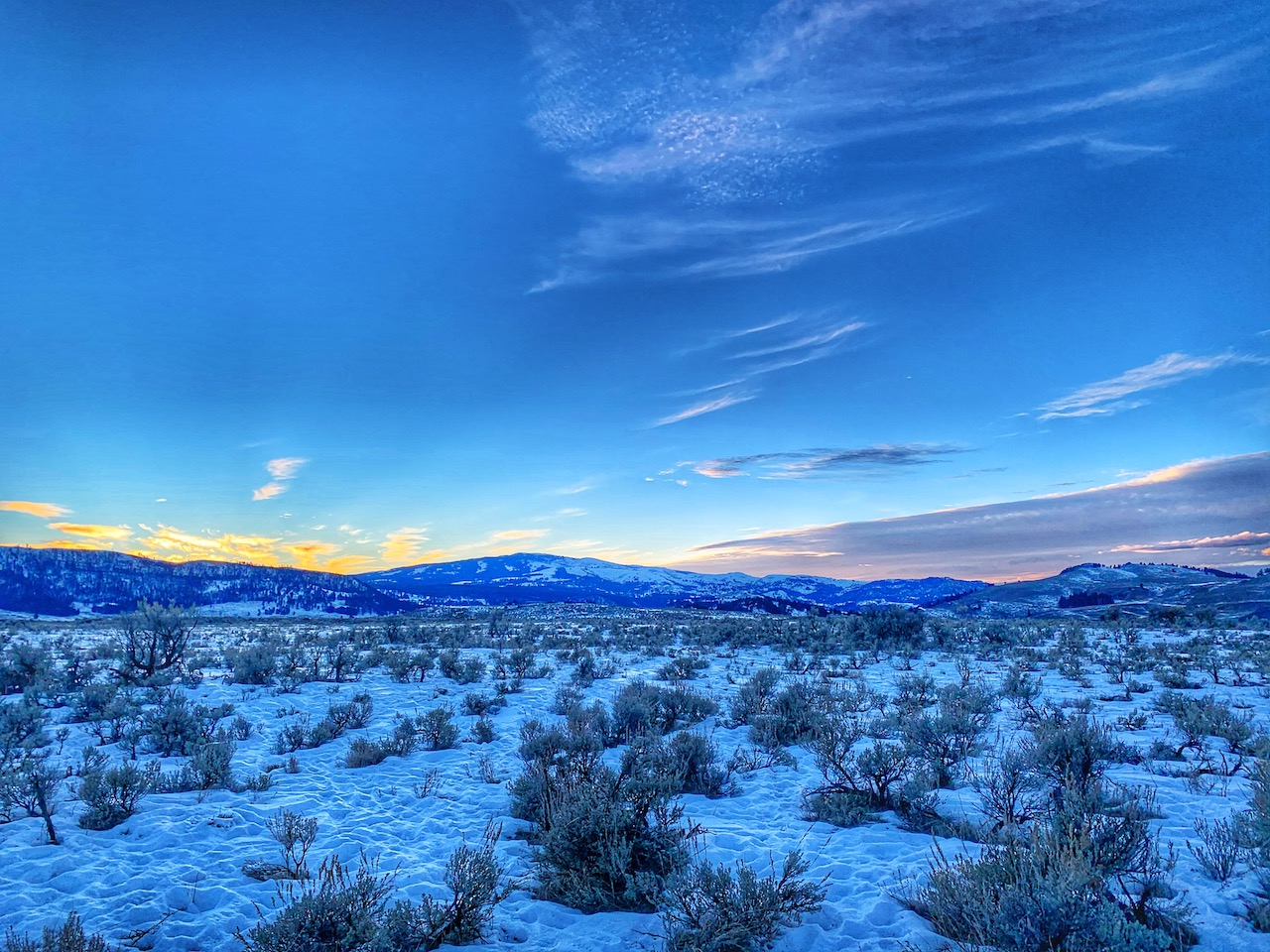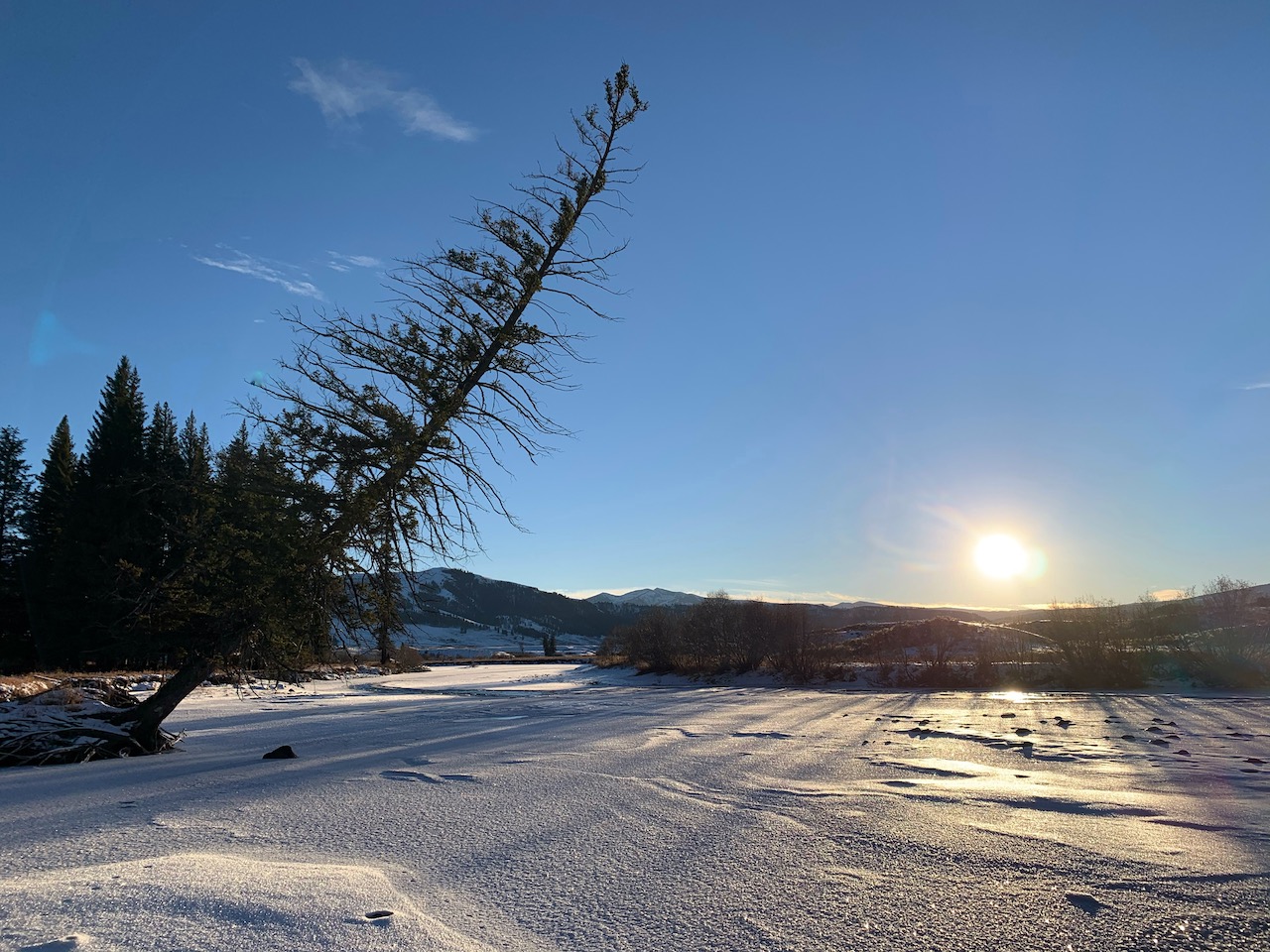This Week in Yellowstone, I look at the number of backcountry campers over the last decade, share where to find the artistic wonder of hoarfrost, give an update on the wolf hunt, and try to convince you to walk down the road to the Slough Creek Campground on a winter day. The snowpack isn’t great, but the weather will be pretty good for your trip, if you are lucky to be visiting Yellowstone this week.
If you enjoy this or know someone who will, please share this and get ready to visit America’s first National Park. If you want to support my weekly park posts, please pick up a guidebook!
BIGGEST NEWS OF THE WEEK
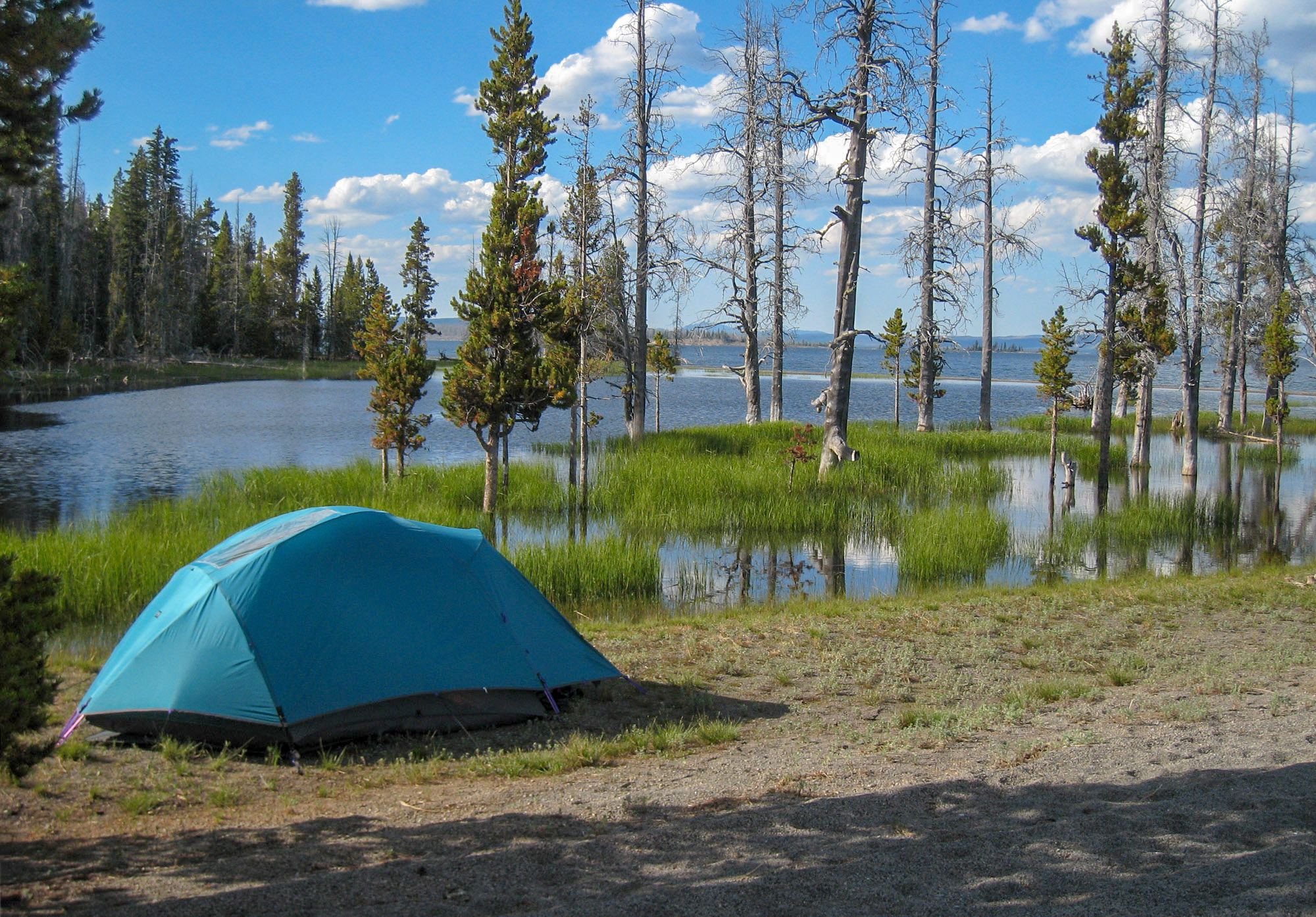
You have no doubt heard about the record crowds that visited Yellowstone National Park in 2021. What you probably didn’t hear is that camping in the backcountry remained around the same levels as the pre-pandemic popularity. Despite more people coming and going through the gates in 2021 than any other time, the backcountry spots were the same as always.
Yellowstone National Park has roughly 300 backcountry campsites spread through the park. In 2021, 43,355 backcountry stays were counted. The breakdown of backcountry camping numbers over the last decade are:
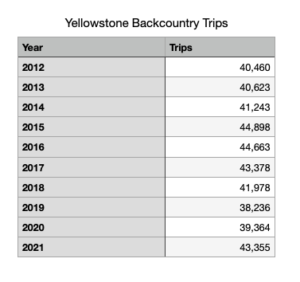
What I find the most interesting is that 2019 and 2020 saw very similar numbers, despite 2020 being impacted by the Covid-19 pandemic. The visitation obviously rebounded in 2021, but not to record numbers. Only time will tell if the increase in visitation translates to a boom in backcountry camping, or if we see this number slowly tick up over the next few years.
The trips into the wilds of the park require a permit and gear. The park won’t help you with gear, but will help you plan a trip of a lifetime into the stunning backcountry of Yellowstone. While some spots are popular enough to book out in advance, you can still patch together a last minute backpacking trip in the park with relative ease. The easiest way to get a backcountry camping permit is to apply in advance and reserve the spot. If you show up and want a trip, these permits can be obtained in person, no more than 48 hours in advance of your planned trip, at one of the park’s backcountry offices. Please see this link for more backcountry camping information.
OTHER IMPORTANT NEWS
Wolf Hunt News
UPDATE: Via the AP: “Montana wildlife commissioners on Friday moved to shut down gray wolf hunting in a portion of the state around Yellowstone National Park, amid mounting criticism over a record number of the animals shot or trapped after roaming across the park boundary this winter.” Read the full article here.
ORIGINAL STORY: As of January 25th, 74 wolves have been killed outside of Yellowstone’s border with Montana. Known as Region 3 to Montana Fish, Wildlife & Parks, this area covers 18,089 square miles, which is more than 12% of the total land area of Montana. It is very important to note that these 74 wolves were not all from Yellowstone’s packs, as many wolves exist and thrive outside the park boundaries. About 60% of the region is made up of public lands administered by the U.S. Forest Service and Bureau of Land Management. The area includes the Montana counties of Beaverhead, Broadwater, Gallatin, Jefferson, Lewis and Clark, Madison, Park, Silver Bow, and part of Deer Lodge. A full map of Montana’s regions, as well as updated wolf harvest numbers can be found at this link.
Region 3 hunting of wolves is the most active wolf hunting area in the state, followed by Regions 1 and 2, which have taken a combined 95 wolfs this hunting season. Regions 1 and 2 make up the western section of Montana, including the lands west of Glacier National Park.
Public outcry over the wolf harvest is increasing, with calls for the policy on hunting to change now, before more wolves are taken out of the ecosystem forever. Wildlife tourism groups in Montana, as well as small business around the greater Yellowstone Ecosystem are upping the pressure for change, building a coalition and getting decent coverage by the local papers. However, from the outside, it appears that Montana Fish, Wildlife & Parks is in step with Governor Gianforte of Montana and the Republican led congress in the state, which is eager to please their big donor ranching friends.
If you’d like to see wolves protected, your best bet is to contact your elected officials and tell them to resist wolves as an endangered/protected species and to have these quasi-genocidal hunts stopped, or at least better regulated. If you contact Montana Governor Gianforte, remember that he has a temper when he gets frustrated.
YELLOWSTONE AREA SNOWPACK
The snowpack around Yellowstone National Park is dwindling again, once again dropping well below the 20 year average. Currently, the snow for the Upper Yellowstone Region of the park, which includes the northern range and the Beartooth Mountains is in the 80%s, while the Gallatin is hovering near 90% of normal. The Madison region is decent still, with a snowpack in the mid-90% area. While this news isn’t ideal, the snowpack in and around the park this year is much better than a year ago. Hopefully, snow comes back to the forecast in the next few weeks to help prepare for the warmer days a few months away.
WEATHER FOR THE COMING WEEK
The weather this coming week is good for visitors, but bad for the snowpack. A few snow showers will be around on Monday and Tuesday and temperatures will plunge near zero in may locations as the overnight low. Highs will range from the low 30s to the single digits around the Northern Range, so bundle up.
This is the weather.com forecast for three locations for the northern range of the park. I will not be covering the weather for the remainder of the park until the road are open. While the forecasts don’t specifically cover the entire region, they should give a great idea of what to expect all around the region. Always error on the side of caution and be aware that weather can and does change fast in the park, so always be prepared for anything.
WILDLIFE WATCH
Wildlife watching is remaining pretty active in the park and should continue to do so this coming week. At the time of writing this, wolf watching is hit and miss. Most wolf watching has taken place in the interior, which is only accessible via snowcap or snowmobile tours. In the northern range, where we can all drive out own vehicles, wolves have been seen, but not dependably so. Your best bet this coming week is to arrive early and look for multiple cars at pullouts, with spotting scopes and long camera lenses. I am 99.9 sure that wolves will be seen this coming week, you’ll just have to have a bit of luck on your side.
The moose are still putting on a show between Soda Butte and Pebble Creek, wandering the hillsides and prairies, feasting on anything they can get their mouth on. Moose eat 10-12 pounds of food a day in the winter, so when you see one eating, anticipate it being in the region for awhile. Also in this area, there is the remains of a carcass near the Pebble Creek Campground. Last week, the trail to the canyon was closed and this closure may remain in effect. Signs are posted around the area and are hard to miss. If you see no signs, feel free to wander!
Eagles and hawks are prevalent around the park, as are golden eyes in the non-iced over water. Coyote sights are sporadic, but on the increase, while bighorn sheep sights are consistent. Your best chance to see the latter is near Hitching Post by Lamar Valley and around the cliffs between Mammoth and Gardiner. I did see a mountain goat on the cliffs north of Pebble Creek, but a spotting scope was required and it was still a small dot. Bison and elk will be everywhere.
Want the best tips and locations for wildlife sightings on your Yellowstone trip? I wrote a book for that very purpose! Pick up your digital ebook or paperback copy now!
ROADS AND CAMPGROUNDS
With minimal snow in the forecast, the roads will continue to be manageable to pretty much everyone. As of the time of publication, I do not see any major weather events that will seriously impact your trip. There will be pockets of snow and ice, but not too many. Drive slow and give cars around you plenty of space. The last thing you want to do is to get in an accident in the prettiest place around.
For up-to-date information call (307) 344-2117 for recorded information, or sign up to receive Yellowstone road alerts on your mobile phone by texting “82190” to 888-777 (an automatic text reply will confirm receipt and provide instructions). Even if the forecast is good, anticipate possible road closures due to inclement weather and dangerous driving conditions. Weather and road conditions can change very fast.
Planning on camping in the park this week?
Do it. It will be chilly, but not brutally cold. Elk have been hanging around the Mammoth Campground and the sunsets in the area have been incredible. There are plenty of spots every night at Mammoth Campground and will continue to be this way until April or May. You can check the status of campgrounds in the park online here.
HIGHLIGHT OF THE WEEK
Saunter Down Slough Creek
Do you love sweeping views, glimpses of bison, coyotes and maybe even wolves? I don’t know why I even bothered to ask that question. Of course you do. Which is why you should walk down the closed Slough Creek road to the Slough Creek Campground. The route is easy to follow and is 5 miles out and back to the frozen creek by the campground. There is one major hill and a total elevation gain of just under 300 feet. It is good for snowshoes and cross country skis.
One of the underrated parts of this mini-adventure is the opportunity to see wildlife away from the car. Seeing a bison in a prairie is fun when driving, but the day changes when you see them a few hundred yards away while on foot. Same with coyotes. More than likely, a coyote will be in this area when you are, but will be hiding a bit from you. It isn’t uncommon for one to be spotted sitting or laying on a ridge nearby, watching you walk by without making a sound or movement. Definitely stop every so often as see if you can spot one.
The hike is pretty easy and always entertaining. Chances are, you’ll be sharing the path with a few other people, but they will more than likely be few and far between. Plan on having a lunch at the picnic tables near the creek and campground for a great, secluded stop.
TIP OF THE WEEK
Celebrate the Cold Mornings with Hoarfrost
Most people want to experience the cold mornings around Yellowstone by staying warm. The urge to stay in bed, wrapped in blankets is hard to break. Many desire to slowly sip on a cup of coffee indoors, looking at the sunrise from behind thick windows. However, by missing the frigid and cold mornings, you are missing out on a landscape of shimmering ice on everything.
If you arrive in the park before the sun has a chance to melt the night’s frost, you’ll encounter a winter wonderland that is truly spectacular- hoarfrost. What is hoarfrost? Hoarfrost is formed by a process analogous to that by which dew is formed on similar objects, except that, in the case of dew, the saturation point of the air mass is above freezing. The occurrence of temperatures below 0° C (32° F) is not enough to guarantee the formation of hoarfrost. Additionally, the air must be initially damp enough so that when cooled it reaches saturation, and any additional cooling will cause condensation to occur. In other words, hoarfrost is frozen dew.
Hoarfrost is like art, as the freezing of the smallest amount of water vapor turns into a dazzling display of complex patterns made of the most frigid of ices. I find that it is nearly impossible to describe, but once one sees it in person, it becomes an obsession.
Your best chances to see hoarfrost are in areas near waterways, as the moisture helps to fuel the growth of these intricate ice designs. However, any early cold morning in the park will have you seeing hoarfrost and nearly all plants, from sage and willows, to blades of grass and everything else. I highly encourage you to stop at a pullout and look at this in the early morning, as it will be gone, without a trace, in a few hours.
WANT TO KNOW MORE?
Curious about something not mentioned in the post?
Send me an email or message on social media and let me know how I can help.


